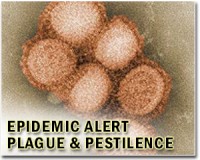| . |  |
. |
Durban, South Africa (AFP) March 20, 2011 When thieves broke into Nonhlanhla's home, they took her most valuable possession: Her AIDS drugs, which in urban legend are a key ingredient in a new narcotic called "whoonga". Experts say whoonga doesn't actually contain AIDS meds, but is rather a combination of heroin, rat poison, and other chemicals. That hasn't ended the public perception that whoonga is laced with anti-retrovirals (ARV's), sewing fear among people who depend on them for survival. "I don't know who the dealers are, but I know that they use kids to steal ARV's for them. In the township you see kids stealing the medication of their parents and selling it to the people who make whoonga," said Nonhlanhla. South Africa has the world's largest HIV-positive population, with 5.7 million of its 48 million people infected with the virus. For many, the theft of their medicine feels like a death sentence. Nonhlanhla lives in KwaMashu, one of Durban's a sprawling townships that last year claimed more homicides than any other neighbourhood in South Africa, which is battling one of the world's highest crime rates. That's compounded the fears surrounding whoonga, which have grown so strong that President Jacob Zuma personally addressed the problem Tuesday, in opening a national conference on substance abuse. "Experts from the University of KwaZulu-Natal have found that the whoonga does not contain ARV's, but is made up of heroin mixed with rat poison and other chemicals," Zuma said. "Perpetuating such inaccuracies is dangerous as it may make drug addicts to steal ARV's, which would put the lives of people on treatment for HIV at risk," he added. But drug dealers like Tami Langa actively perpetuate the myth. He started smoking drugs in 2007. The next year he became a dealer, and now he's trying to change his life and finish a rehab programme. He says he's bought, smoked, made and sold whoonga, which sells for 20 rand (three dollars, two euros) and is crushed into marijuana joints for smoking. "What we put in whoonga? We put ARV's, rat poison and other things," he told AFP. The urban legend has taken on a life of its own, said Bridget Beauchamp, who works in a pharmacy in KwaMashu, one of Durban's sprawling townships. "They don't come to the clinic and tell us straight, 'I've been robbed'. But we know it, and sometimes they don't even get robbed -- they are selling it," she said. Anwar Jeewa, director of the Durban rehabilitation centre Minds Alive, tested six samples of whoonga from different parts of the city, which found no traces of ARV's. He doesn't doubt that in rare instances ARV's are abused by drug addicts, but says whoonga's popularity is mainly a product of marketing by dealers. Because heroin is expensive, dealers cut the drug with other substances to make it more affordable and sell it under different names, he said. "A few years ago, the same drug was called 'sugar'. Brand names create an interest for demand," he said. "It's marketing it in a different name." "There is still ARV abuse, but not as big as heroin use," he added. Santosh Basdeo, a pharmacist at a KwaMashu clinic, said whoonga is just a dirty drug that could have anything in it. "Whoonga can be anything from a combination of ARV's, to rat poison, things that you can buy over the counter at the pharmacy, things that you even have at home as well as any ingredient just to basically keep the cost of the drug as low as possible," he said. "Because, their aim is to eventually make a profit."
Share This Article With Planet Earth
Related Links Epidemics on Earth - Bird Flu, HIV/AIDS, Ebola
 One dead as swine flu returns to Venezuela
One dead as swine flu returns to VenezuelaCaracas (AFP) March 18, 2011 At least one person has died from a resurgence of swine flu in Venezuela that infected 12 other people, Health Minister Eugenia Sader said Thursday. "We have an outbreak of H1N1 in the state of Merida," she said, adding that 12 people have tested positive for the disease and a 32-year-old has died. Sader said only one of those who tested positive had been hospitalized, with the others tr ... read more |
|
| The content herein, unless otherwise known to be public domain, are Copyright 1995-2010 - SpaceDaily. AFP and UPI Wire Stories are copyright Agence France-Presse and United Press International. ESA Portal Reports are copyright European Space Agency. All NASA sourced material is public domain. Additional copyrights may apply in whole or part to other bona fide parties. Advertising does not imply endorsement,agreement or approval of any opinions, statements or information provided by SpaceDaily on any Web page published or hosted by SpaceDaily. Privacy Statement |